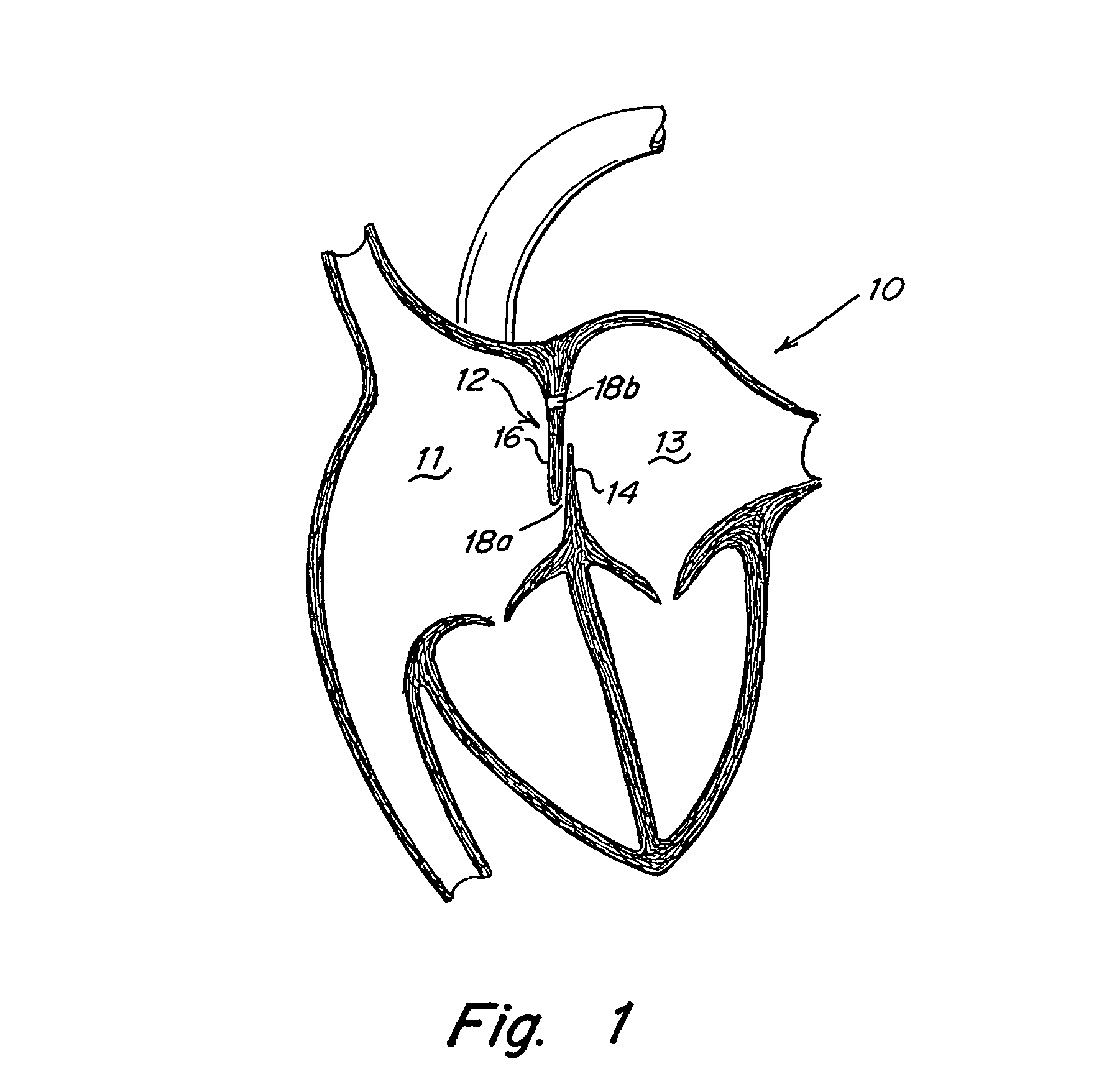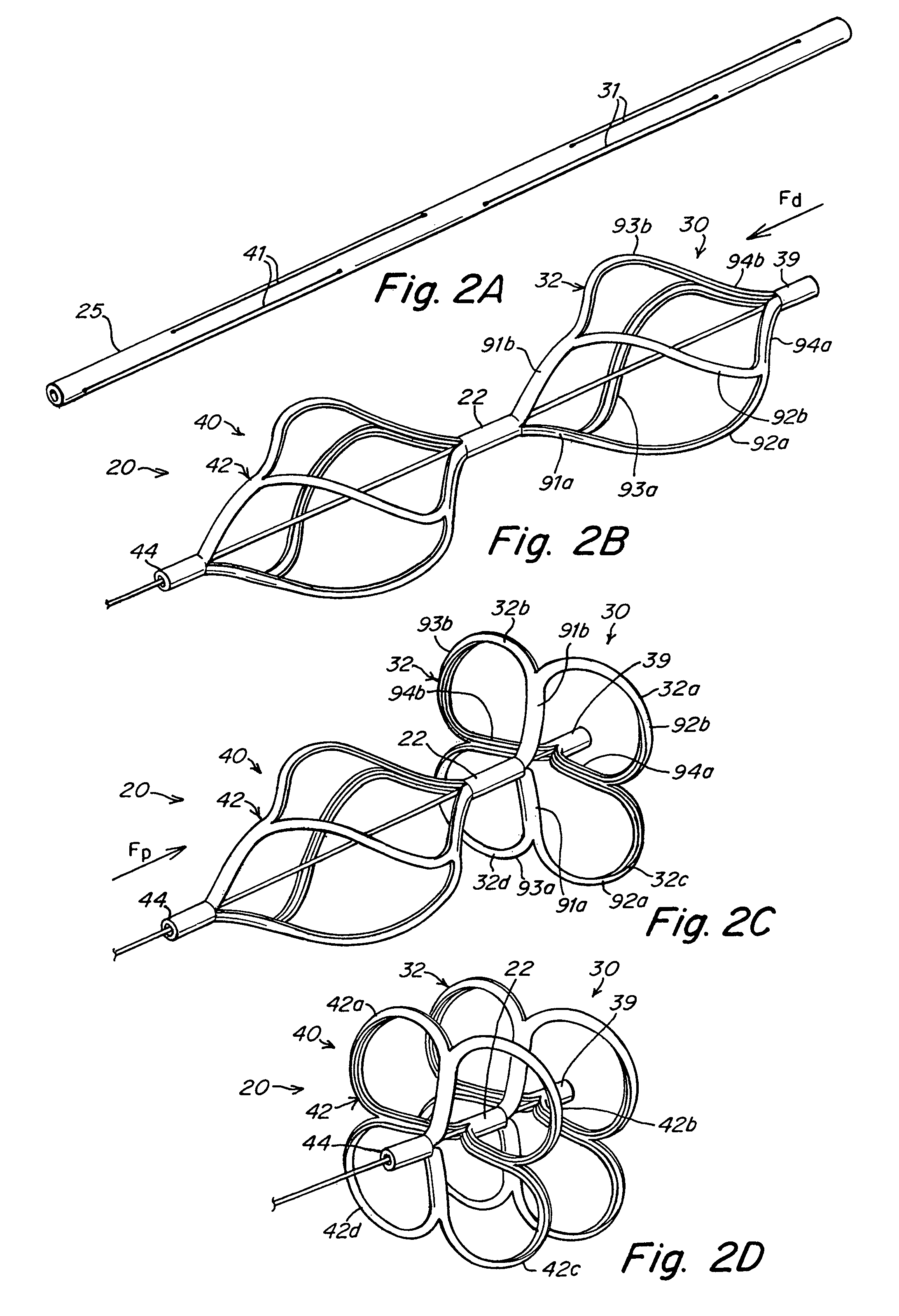Tubular patent foramen ovale (PFO) closure device with catch system
a technology of patent foramen ovale and closure device, which is applied in the field of occlusion devices, can solve the problems of recurrent cerebrovascular events, adverse side effects, umbrella devices and the like designed for asds that are not optimally suited for use as pfo closure devices, and achieve the effect of minimizing trauma to the septal tissu
- Summary
- Abstract
- Description
- Claims
- Application Information
AI Technical Summary
Benefits of technology
Problems solved by technology
Method used
Image
Examples
Embodiment Construction
[0042]The present invention provides a device for occluding an aperture within body tissue. This device relates particularly to, but is not limited to, a septal occluder made from a polymer tube. In particular and as described in detail below, the occluder of the present invention may be used for closing an ASD or PFO in the atrial septum of a heart. Although the embodiments of the invention are described with reference to an ASD or PFO, one skilled in the art will recognize that the device and methods of the present invention may be used to treat other anatomical conditions. As such, the invention should not be considered limited in applicability to any particular anatomical condition.
[0043]FIG. 1 illustrates a human heart 10, having a right atrium 11 and a left atrium 13 and including various anatomical anomalies 18a and 18b. The atrial septum 12 includes septum primum 14 and septum secundum 16. The anatomy of the septum 12 varies widely within the population. In some people, sept...
PUM
 Login to View More
Login to View More Abstract
Description
Claims
Application Information
 Login to View More
Login to View More - R&D
- Intellectual Property
- Life Sciences
- Materials
- Tech Scout
- Unparalleled Data Quality
- Higher Quality Content
- 60% Fewer Hallucinations
Browse by: Latest US Patents, China's latest patents, Technical Efficacy Thesaurus, Application Domain, Technology Topic, Popular Technical Reports.
© 2025 PatSnap. All rights reserved.Legal|Privacy policy|Modern Slavery Act Transparency Statement|Sitemap|About US| Contact US: help@patsnap.com



